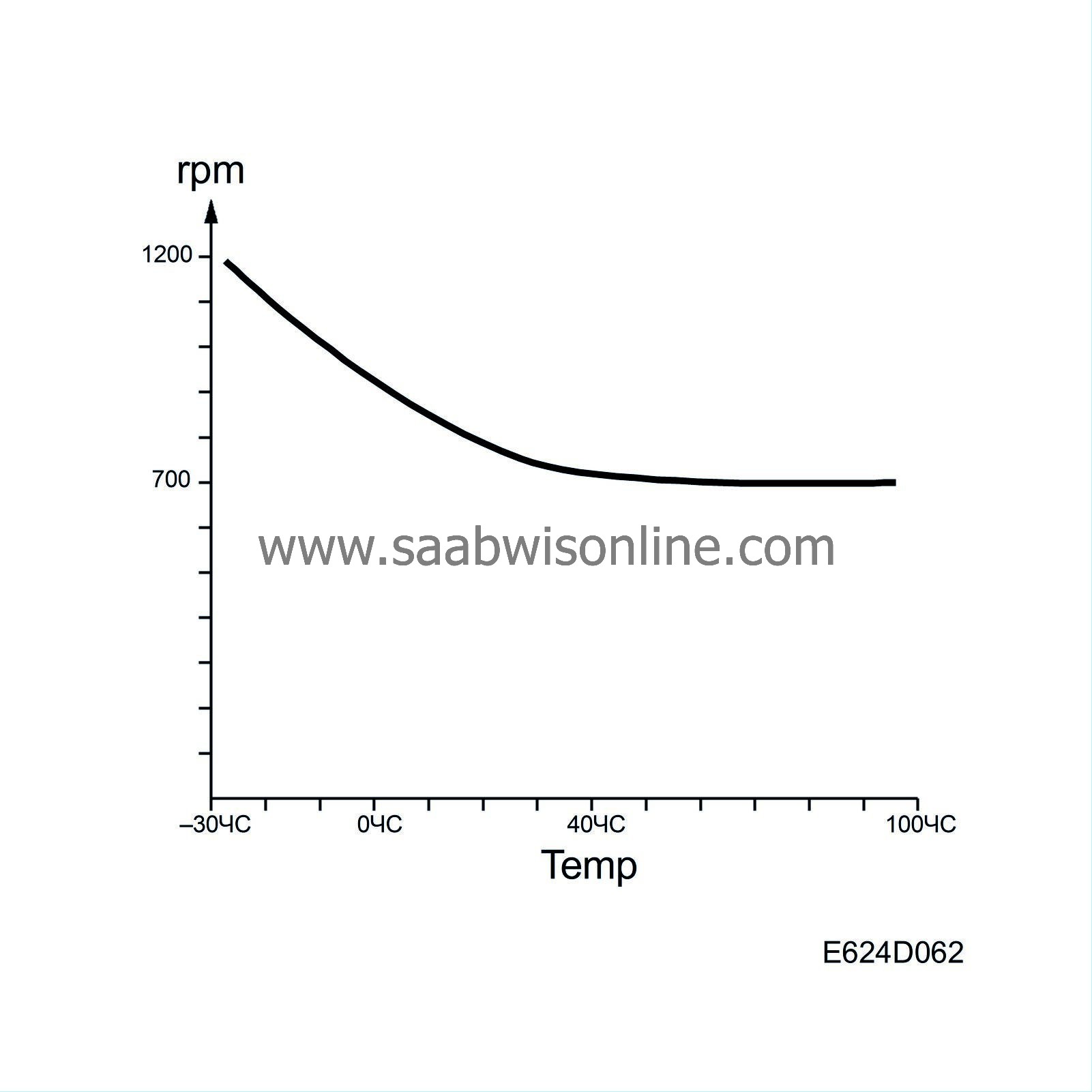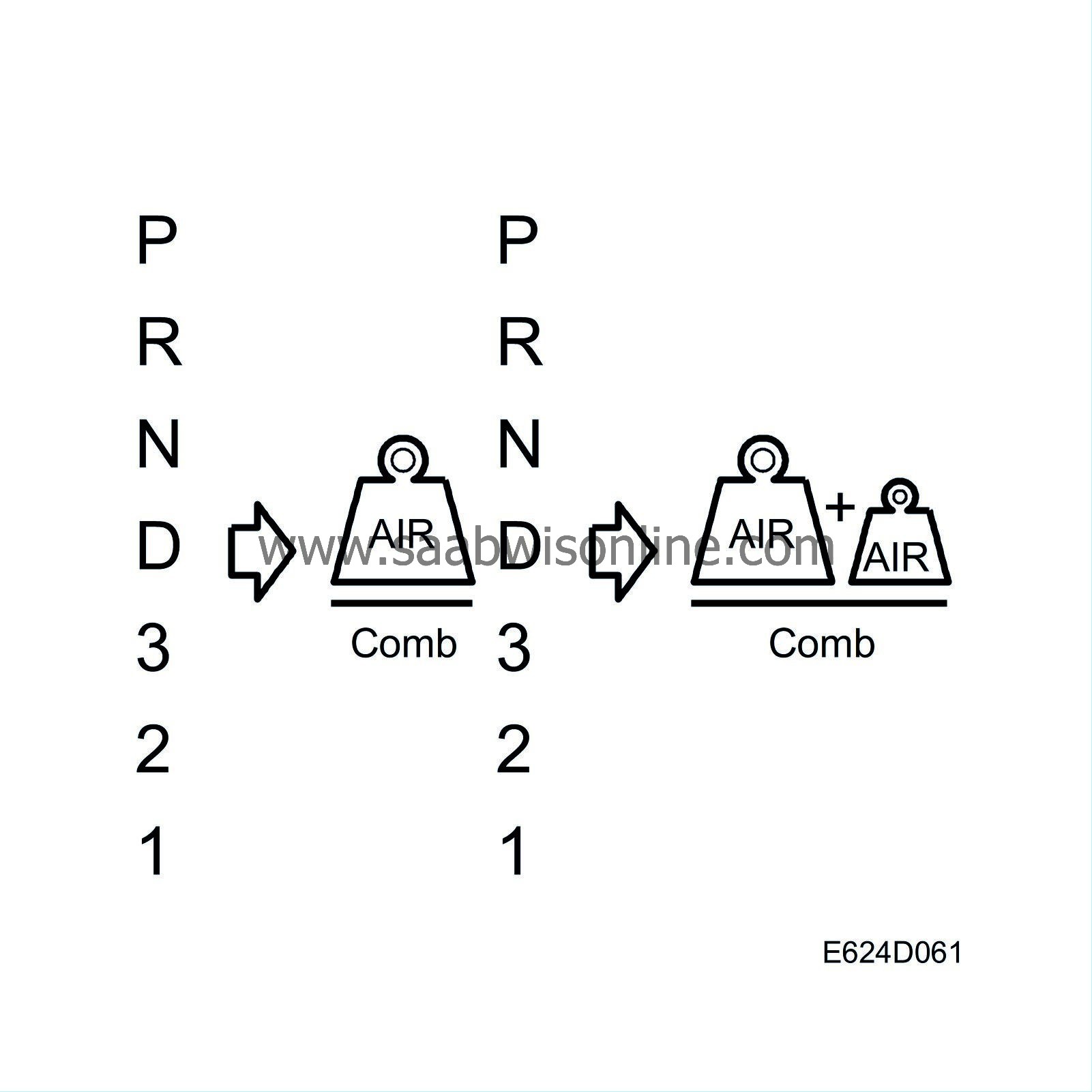Other air request
| Other air request |

| Idle speed control |
With the accelerator pedal fully released and the vehicle speed at zero, the system will provide sufficient air mass/combustion so that the actual idling speed corresponds with the requested. The required air is stored in the control module memory (adaptation). The requested idling speed is stored in a table in the control module memory and is dependent on the engine coolant temperature. At -30 °C, the value will be 1200 rpm and as the engine warms up, the requested engine speed will drop to ordinary idling speed.
DICE sends bus information: “Fast Idling Speed”. The value is used by Trionic. DICE sends “ON” if the radiator fan is activated at high speed at any time during the current driving cycle. The requested idling speed is then increased gradually to 750 rpm in order to increase the output from the generator and the A/C compressor.
TCM sends bus information "Selector lever position”, unit P, R, N, D, 4, 3 or L. The value is used by Trionic T7.
When any value other than P or N is selected, the requested air mass/combustion is increased to compensate for the impending increase in load. This is to fully compensate for the increased engine torque requirement of the automatic transmission so that a rapid decrease of the idling speed is avoided before the idle speed control has time to compensate. The air requirement in any other position than P or N is stored in the control module memory (adaptation).
As soon as the car is in motion, the idle speed control will be disengaged and the engine will receive the adapted air quantity.
| Diagnostics |
| • |
If the idling speed is too high, diagnostic trouble code P0507 will be generated.
If the idling speed is too low, diagnostic trouble code P0506 will be generated. |
|
| • |
The difference between the requested idling speed and the current idling speed can be read with the diagnostic tool, as can whether idle speed control is active.
|
|



